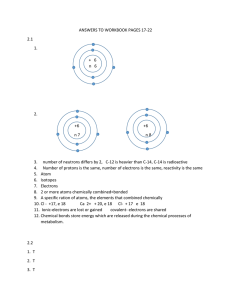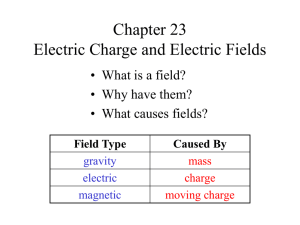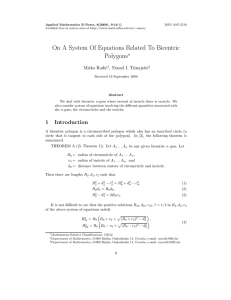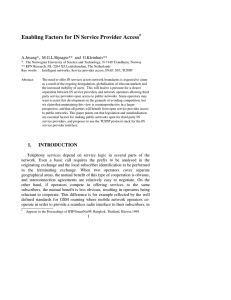Homework 7 (due Friday, November, 13)
advertisement
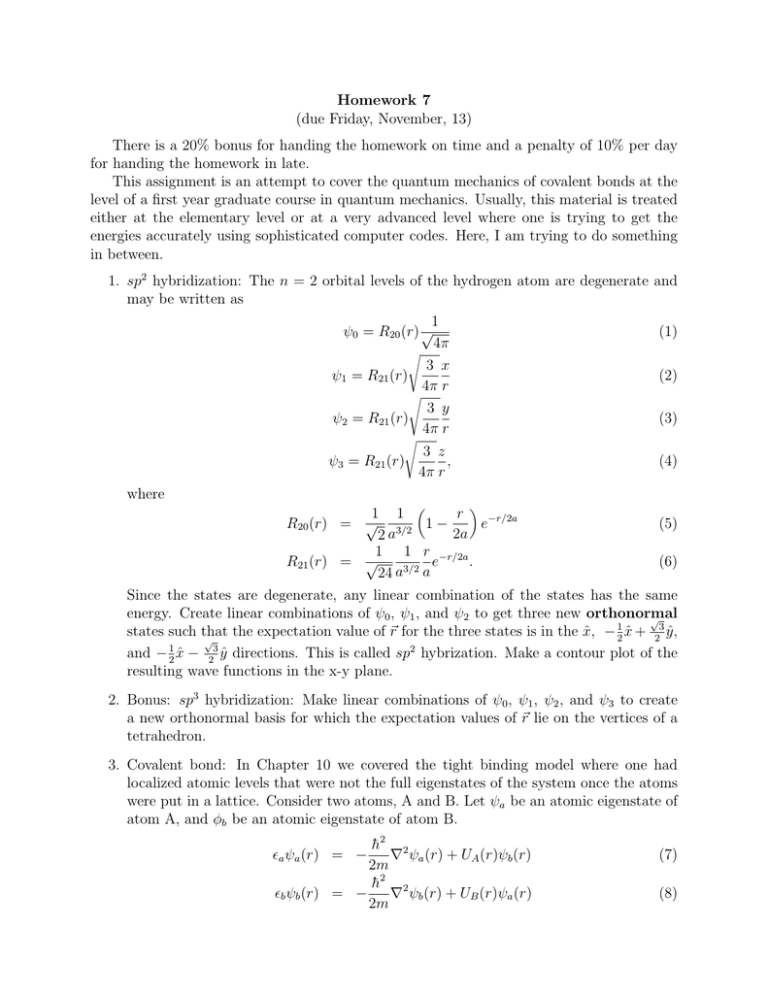
Homework 7 (due Friday, November, 13) There is a 20% bonus for handing the homework on time and a penalty of 10% per day for handing the homework in late. This assignment is an attempt to cover the quantum mechanics of covalent bonds at the level of a first year graduate course in quantum mechanics. Usually, this material is treated either at the elementary level or at a very advanced level where one is trying to get the energies accurately using sophisticated computer codes. Here, I am trying to do something in between. 1. sp2 hybridization: The n = 2 orbital levels of the hydrogen atom are degenerate and may be written as 1 (1) ψ0 = R20 (r) √ 4π s 3 x (2) ψ1 = R21 (r) 4π r s ψ2 = R21 (r) s ψ3 = R21 (r) 3 y 4π r (3) 3 z , 4π r (4) where 1 1 r R20 (r) = √ 3/2 1 − e−r/2a (5) 2a 2a 1 1 r −r/2a R21 (r) = √ e . (6) 24 a3/2 a Since the states are degenerate, any linear combination of the states has the same energy. Create linear combinations of ψ0 , ψ1 , and ψ2 to get three new orthonormal √ 3 1 x̂ + ŷ, states such that the expectation value of ~ r for the three states is in the x̂, − 2 2 √ 1 3 and − 2 x̂ − 2 ŷ directions. This is called sp2 hybrization. Make a contour plot of the resulting wave functions in the x-y plane. 2. Bonus: sp3 hybridization: Make linear combinations of ψ0 , ψ1 , ψ2 , and ψ3 to create a new orthonormal basis for which the expectation values of ~r lie on the vertices of a tetrahedron. 3. Covalent bond: In Chapter 10 we covered the tight binding model where one had localized atomic levels that were not the full eigenstates of the system once the atoms were put in a lattice. Consider two atoms, A and B. Let ψa be an atomic eigenstate of atom A, and φb be an atomic eigenstate of atom B. h̄2 2 a ψa (r) = − ∇ ψa (r) + UA (r)ψb (r) 2m h̄2 2 b ψb (r) = − ∇ ψb (r) + UB (r)ψa (r) 2m (7) (8) Now we wish to find a single particle solution when the two atoms are a distance R apart: h̄2 2 ∇ ψ(r) + UA (r)ψ(r) + UB (r − R)ψ(r). (9) ψ(r) = − 2m Both ψa (r) and ψb (r − R) are approximate solutions when R is large. Do a variational calculation with a wave function of the form ca ψa (r) + cb ψb (r − R) also taking a = b . What is the energy and by how much is it lower than a ? This is the major contribution to the bonding energy. Why do we say that the electron is shared between atoms A and B? 4. The cohesive energy for diamond is 7.37 eV per atom. Assuming that this energy is due to the covalent bonds, what would you estimate as the energy of a single CarbonCarbon covalent bond? Convert this to kJoule/mole. A typical C-C bond energy is 347 kJ/mol. How does your answer compare to this?






